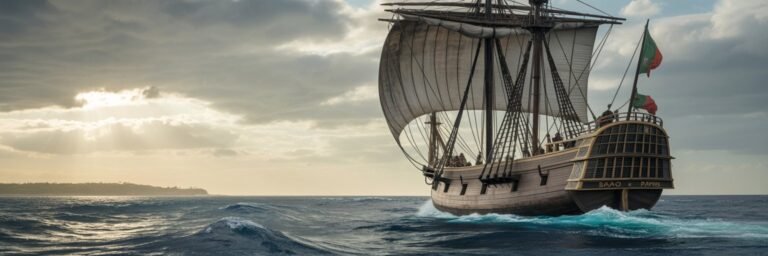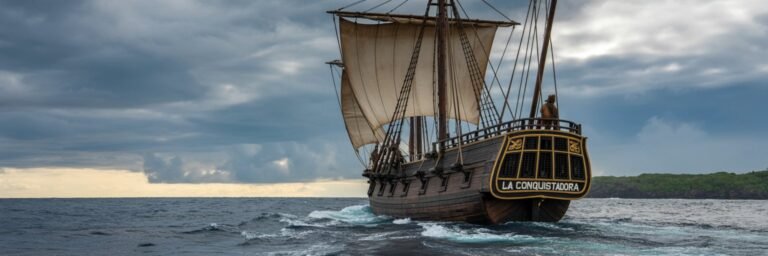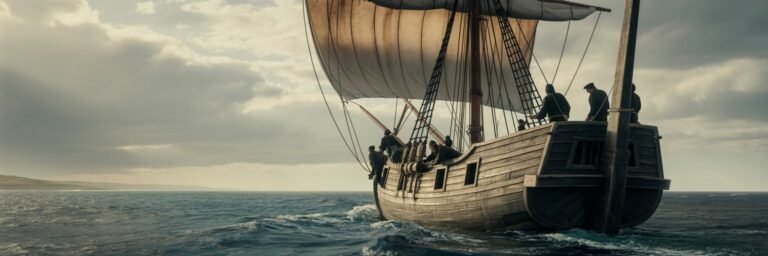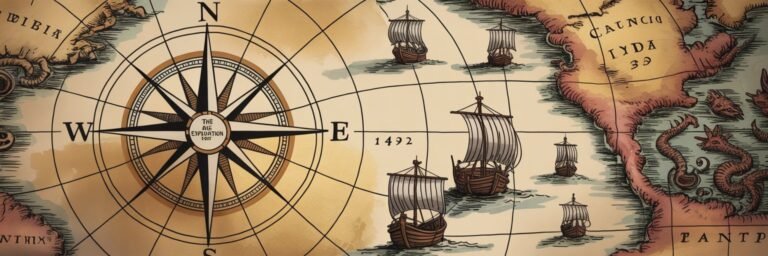INTRODUCTION
Dawn breaks on a crisp morning in the 15th century. There is an air of restive mystery, a sense of foreboding optimism. This is the Age of Exploration, an epoch that altered the course of human civilization. Great visionaries dared to imagine a horizon beyond the familiar and dispatched imposing wooden ships filled with brave adventurers ready to defy the unknown. They transformed fairly-parochical maps into detailed representations of a vast and complex world. Our journey today navigates through the historical currents of this era, spotlighting the influential figures who changed the course of history and, in doing so, projected civilization into modernity.
HISTORICAL BACKGROUND
The Age of Exploration, often referred to as the Age of Discovery, transpired between the 15th and 17th centuries. A confluence of technological developments, intellectual curiosity, religious fervor, and economic ambitions converged into a tidal wave of exploration. Notably, it was the era of Columbus, Magellan, and Vasco da Gama—names etched indelibly into our shared historical memory.
An apt starting point is Christopher Columbus, the Genoan mariner sailing under the Spanish flag. In 1492, Columbus reached the Americas while seeking a westward sea route to Asia—a voyage that ascended him into the pantheon of explorers. Ferdinand Magellan has equal claims to distinction. Beginning his journey in 1519, he embarked on the first circumnavigation of the Earth—an expedition that cost him his life, but resulted in an exceptional advancement in global understanding. Vasco da Gama, the Portuguese explorer, linked Europe and Asia by sea, paving way for the Portuguese Empire’s prosperity and demonstrating the viability of the Cape of Good Hope as a route to the East.
THEORIES AND INTERPRETATIONS
Scholars have interpreted the Age of Exploration through disparate lenses, attributing its impetus to varied causes. Traditional narratives focus on the ‘Four Gs’—God, Gold, Glory, and Geography. Proponents of this theory argue explorers were driven by the desire to spread Christianity (God), amass wealth (Gold), earn recognition (Glory), and discover new territories (Geography).
However, recent interpretations dispute the simplicity of the Four G’s ideology. They argue that influences were far more nuanced and complex, intertwined with burgeoning national identities, the push for scientific knowledge, civilizational rivalry, and a surge in literary travel narratives that ignited public imagination.
MYSTERIES AND CONTROVERSIES
Despite meticulous scrutiny, the Age of Exploration is a mosaic of mysteries, controversies, and tantalizing ‘what-ifs’. The plight of Prester John, a mythical Christian ruler said to reside amid Muslim territories, remains an unsolved enigma. Did he exist? Was he a catalyst for exploration, or merely a fantastical distraction?
Then, there’s Columbus. Hailed as a visionary who opened up the ‘New World’, he’s also reviled for his brutal mistreatment of Indigenous populations and his role in launching the brutal and genocidal transatlantic slave trade. This duality of the Age of Exploration embodies the fundamental controversy—were these explorers triumphant pioneers or harbingers of destruction?
SYMBOLISM AND CULTURAL SIGNIFICANCE
The Age of Exploration carries profound symbolic and cultural significance. It is a testament to human courage, resilience, and to the limitless expanse of human curiosity. The explorers are often depicted as heroic figures, embodying determination and persistence.
Yet, this epoch also symbolizes an era of exploitation and colonization, underscored by horrific violence and subjugation. Hence, the Age of Exploration is a prism—simultaneously reflecting the most noble and ignoble aspects of human nature, depending on the vantage point of the observer.
MODERN INVESTIGATIONS
Today, historians, archaeologists, and scientists employ advanced tools to investigate the Age of Exploration. From DNA sequencing to high-tech deep-dive archaeological expeditions, modern science has incredibly amplified our understanding.
Recently, the possible discovery of Columbus’s ship, the Santa Maria, off the coast of Haiti demonstrates the monumental potential of underwater archaeology. Meanwhile, genetic studies on indigenous populations aim to trace the devastating demographic impact of European exploration.
LEGACY AND CONCLUSION
The legacy of the Age of Exploration reverberates through time, shaping the economic, political, and cultural topography of our world. It connected continents, empires, and cultures, triggering exchanges of ideas, innovations, and commodities. Alas, it also precipitated unprecedented cataclysms, wars, and cataclysmic demographic shifts.
Yet the central, unimpeachable legacy remains the irrepressible human spirit to explore, discover, and understand. The echo of the ship’s bell, the ghostly creak of the hull, the distant call of the lookout can still be heard, reminding us that we are, all of us, explorers—an inheritance from this transformative age.
In the final analysis, the Age of Exploration is a kaleidoscope of humanity, capturing a panorama of courage, curiosity, ambition, intellect, brutality, and resilience. Characters like Columbus, Magellan, and da Gama serve as both mirrors and windows, reflecting our identity and framing our view of the world. Their actions and legacies continue to challenge us, prompting introspection and kindling the flame of inquiry. And that, perhaps, remains the most influential aspect of this epoch—its relentless insistence on pushing boundaries and questioning the known landscapes of thought and geography. Because, after all, exploration isn’t merely about discovering uncharted lands, it’s about navigating the fathomless depths of the human soul.





